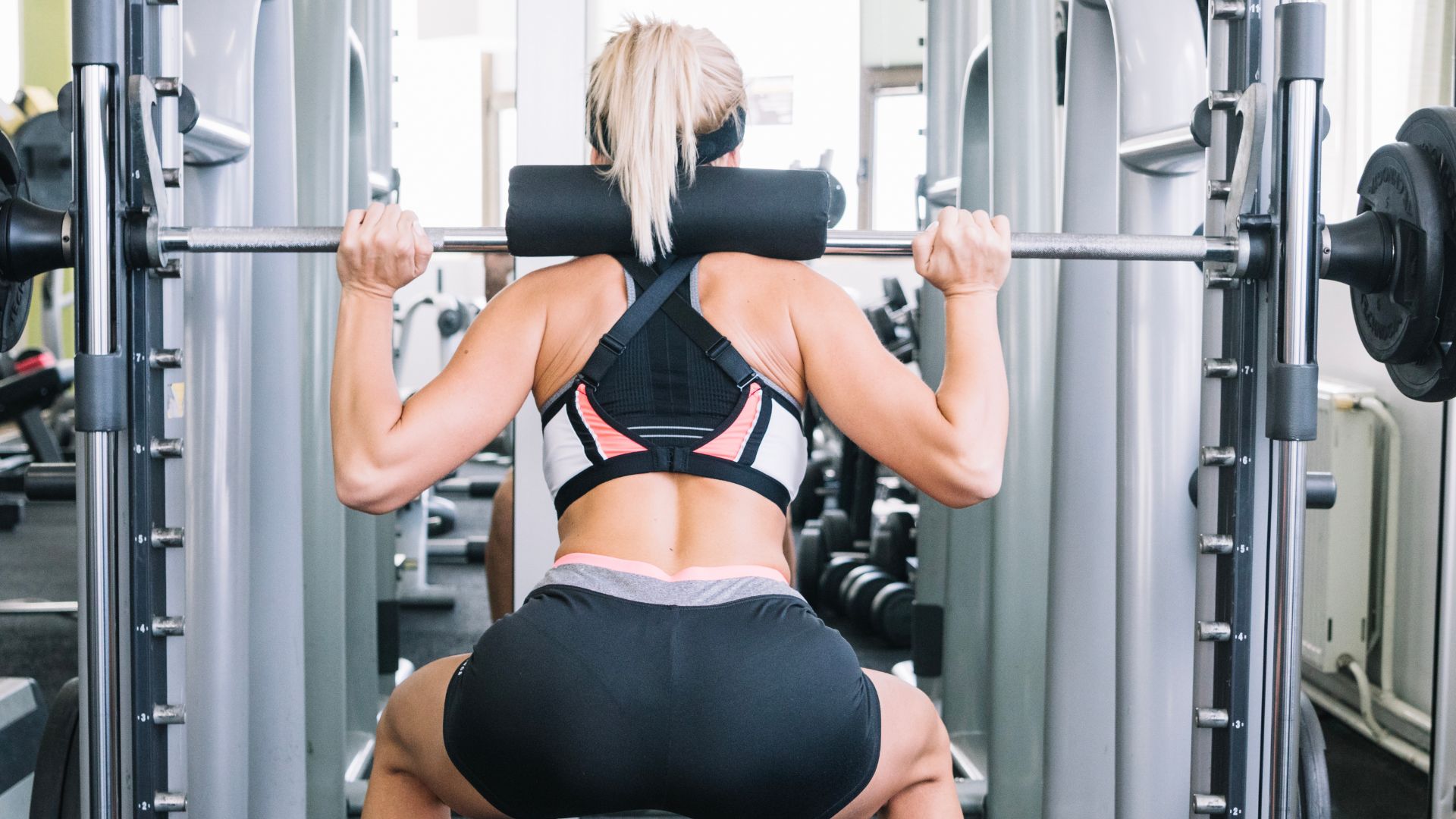Welcome to the topic of high bar versus low bar back squats. If you’re looking to build lower body strength and muscle mass, back squats are an essential exercise to include in your training regimen. However, there are two main variations of back squats: high bar and low bar.
Choosing between the two can be difficult, as each variation targets different muscle groups and requires different levels of mobility and form.
In this article, we’ll explore the differences between high bar and low bar back squats, their benefits, and how to choose which variation is best for you.
The decision to do high bar or low bar back squats depends on your specific goals and physical abilities. High bar squats place the barbell higher on the traps, allowing for a more upright torso and greater emphasis on the quads. This can be beneficial for athletes looking to improve their performance in sports that require explosive jumping or running movements. On the other hand, low bar squats place the barbell lower on the back, allowing for a more forward lean and greater emphasis on the posterior chain. This can be beneficial for powerlifters or individuals looking to increase their overall strength and muscle mass. Ultimately, the choice between high bar and low bar squats should be based on your individual goals and physical abilities.
The decision depends on your specific goals and physical abilities.
When it comes to performing back squats, there are two main variations to choose from: high bar and low bar.
Each variation has its own specific benefits and drawbacks, which is why choosing which one to do ultimately depends on your specific goals and physical abilities.
High bar back squats place the barbell on your upper traps, which results in a more upright torso position during the squat.
This variation is ideal for those looking to build strength and muscle in their quads, glutes, and core.
Additionally, high bar squats require more ankle mobility, making it a great exercise for those looking to improve their mobility in that area.
On the other hand, low bar back squats place the barbell on your rear delts, which results in a more forward-leaning torso position during the squat.
This variation is ideal for those looking to build strength and muscle in their hamstrings, glutes, and lower back.
Additionally, low bar squats require less ankle mobility, making it a great exercise for those who struggle with mobility in that area.
When deciding which variation to perform, it’s important to consider your specific goals and physical abilities. If you’re looking to build strength and muscle in your quads and have good ankle mobility, high bar squats may be the better option.
However, if you’re looking to build strength and muscle in your hamstrings and struggle with ankle mobility, low bar squats may be the better option.
Ultimately, both variations are great exercises for building lower body strength and muscle. Choosing which one to do ultimately depends on your specific goals and physical abilities.

High bar squats can be beneficial for athletes looking to improve their performance in sports.
High bar squats are a popular variation of the squat exercise that place the barbell higher on the traps, allowing for a more upright torso and greater emphasis on the quads.
This variation of the squat is especially beneficial for athletes looking to improve their performance in sports that require explosive jumping or running movements.
The quads are the primary muscle group targeted during high bar squats, which is why this variation is great for athletes looking to improve their jumping ability.
Strong quads are essential for explosive jumping movements, as they allow for greater force production and power output.
By emphasizing the quads during high bar squats, athletes can improve their jumping ability and overall explosive power.
In addition to improving jumping ability, high bar squats can also be beneficial for athletes looking to improve their performance in sports that require running movements.
The quads are also heavily involved in running, as they help to extend the knee and propel the body forward. By strengthening the quads through high bar squats, athletes can improve their running speed and endurance.
Another benefit of high bar squats is that they require greater ankle mobility, which can be beneficial for athletes looking to improve their overall mobility and flexibility.
Improved ankle mobility can help athletes perform movements with greater ease and efficiency, which can ultimately lead to improved performance on the field or court.
note that while high bar squats are great for improving explosive power and running ability, they may not be the best option for all athletes.
Athletes with mobility or flexibility issues may struggle with this variation of the squat, and may be better off performing other variations such as low bar squats or front squats.
high bar squats can be a valuable addition to an athlete’s training program, especially for those looking to improve their explosive power and running ability.
By emphasizing the quads and improving ankle mobility, high bar squats can help athletes perform at their best on the field or court.
Here’s a chart table that highlights the benefits of high bar squats for athletes:
Benefits of High Bar Squats for Athletes |
|---|
| Increased quad strength and power |
| Improved explosiveness and jumping ability |
| Enhanced balance and stability |
| Reduced risk of knee injuries |
| Improved squat technique and form |
As you can see, high bar squats can offer a range of benefits for athletes. By targeting the quads more effectively, high bar squats can increase quad strength and power, which can be useful for athletes in sports that require running, jumping, cutting, and quick changes of direction.
high bar squats can improve explosiveness and jumping ability, which can be advantageous for athletes in sports that require explosive movements such as basketball, volleyball, and football.
high bar squats can enhance balance and stability, which can help athletes maintain better control during movements and reduce the risk of knee injuries.
high bar squats can improve squat technique and form, which can translate to better performance in other exercises and movements.
high bar squats can be a valuable addition to an athlete’s training regimen, especially for those looking to improve their lower body strength and power.
Low bar squats can be beneficial for powerlifters and individuals looking to increase their overall strength and muscle mass.
Low bar squats are a variation of the traditional back squat, in which the barbell is placed lower on the back, closer to the shoulder blades.
This placement of the barbell allows for a more forward lean and greater emphasis on the posterior chain, which includes the glutes, hamstrings, and lower back muscles.
This variation of the squat is particularly beneficial for powerlifters or individuals looking to increase their overall strength and muscle mass.
One of the primary benefits of the low bar squat is the increased emphasis on the posterior chain, which is important for powerlifting.
This muscle group is responsible for generating force and power during exercises like deadlifts, squats, and other compound lifts.
By placing the barbell lower on the back, low bar squats engage the posterior chain more effectively than high bar squats, which place greater emphasis on the quadriceps.
Another benefit of the low bar squat is the increased range of motion at the bottom of the lift.
With the barbell placed lower on the back, the lifter is able to achieve a greater depth in the squat, which can be important for powerlifting competitions where the depth of the squat is judged.
Additionally, the increased range of motion can lead to greater muscle activation and growth, further contributing to strength and muscle gains.
However, it’s important to note that the low bar squat requires proper form and technique to be performed safely and effectively.
The forward lean that occurs with this variation can put increased stress on the lower back, so it’s important to maintain a neutral spine and engage the core muscles throughout the lift.
Additionally, the lifter must maintain balance and control throughout the movement, which can be challenging for those who are new to the exercise.
Low bar squats are a valuable addition to any strength training program, particularly for powerlifters or individuals looking to increase their overall strength and muscle mass.
By placing the barbell lower on the back, this variation of the squat allows for a more forward lean and greater emphasis on the posterior chain, leading to greater muscle activation and growth.
However, it’s important to practice proper form and technique to ensure safety and effectiveness during the exercise.
Final thoughts
Deciding which type of back squat to do will depend on your individual goals and physical abilities.
If you’re looking to build more overall leg strength and size, the high bar squat may be a better option as it targets the quads more effectively.
However, if you’re looking to improve your posterior chain strength and power, the low bar squat may be more beneficial as it targets the hips and glutes more effectively.
It’s also important to consider your mobility and form when choosing which squat variation to do. If you have limited ankle mobility or struggle to maintain an upright torso, the low bar squat may be more suitable for you as it allows for a more forward lean.
Ultimately, both high bar and low bar back squats are effective exercises for building lower body strength and should be incorporated into a well-rounded training program. It’s recommended to switch between the two variations periodically to challenge your muscles in different ways and prevent plateauing.
Below is a chart that summarizes the differences between high bar and low bar back squats:
High Bar Back Squat |
Low Bar Back Squat |
|---|---|
| Barbell rests on the upper traps | Barbell rests on the rear delts and lower traps |
| More quad dominant | More hip and glute dominant |
| Requires more ankle mobility | Requires less ankle mobility |
| More upright torso | More forward lean |
| Less weight lifted compared to low bar | More weight lifted compared to high bar |
Conclusion
In conclusion, high bar back squats and low bar back squats are both effective exercises that can be used to build lower body strength and muscle mass.
The choice between the two variations should be based on your individual goals, physical abilities, and mobility.
If you’re looking to target your quads more effectively and have good ankle mobility, the high bar squat may be a better option for you.
On the other hand, if you’re looking to target your posterior chain more effectively and have limited ankle mobility, the low bar squat may be more beneficial.
It’s important to note that both variations require proper form and technique to be performed safely and effectively.
It’s also recommended to switch between the two variations periodically to challenge your muscles in different ways and prevent plateauing.
Ultimately, incorporating both high bar and low bar back squats into your training regimen can help you achieve a well-rounded lower body strength and size.

Hey there, it’s Mike Rrsq, the Editor-in-Chief over at Jsquat.com, and I’m absolutely obsessed with all things squat fitness! I’ve been lucky enough to get some serious recognition for my work in this field. With a solid background in the fitness and wellness industry, I’ve been there right from the get-go, helping shape this website into what it is today.
You see, I’m not just the boss around here; I’m also a passionate contributor. I love sharing my insights through my articles, and trust me, they’re not your run-of-the-mill stuff. Each piece I write is a labor of love, filled with my expertise and real-world experience in the fitness universe. So, if you’re into fitness and looking for some inspiration, you’re in the right place!

